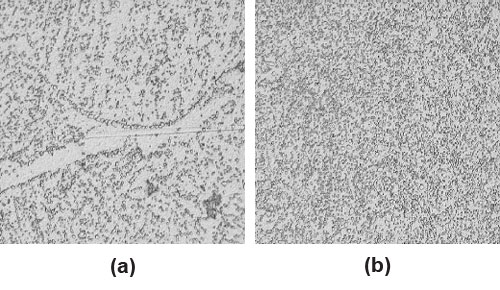Plastic Mold Steels
Abstract
Continuously growing activity in the area of the engineering plastics led to the necessity of developing new low-cost, high-performance plastic mold steels.
Precipitation hardening tool steels are being proposed for such an application, yielding improved mechanical properties and lower overall costs and lead-times.
Introduction
Continuously growing activity in the area of the engineering plastics led to the necessity of developing new low-cost, high-performance plastic mold steels. In fact, when it is necessary to fabricate large plastic components, plastic mold steel exhibits low fracture toughness and highly inhomogeneous microstructures (continuously varying from surface to core), as obtained from the pre-hardening (quenching and tempering) of large blooms.
New alloys and alternative manufacturing routes may allow us to obtain plastic injection molds with good mechanical, wear and weldability properties. Precipitation hardening tool steels are being proposed for such an application, yielding improved mechanical properties and lower overall costs and lead-times.
Pre-hardened mould steels are widely used for manufacturing mould for plastic. Because these steels are quenched and tempered to 30÷40 HRC, then manufactured into mould for plastic directly, the deformation and cracking of mould resulted from heat treatment can then be avoided. But this kind of steel is sometimes difficult to machine and good machinability of such mould steel is requested as standard.
One way to meet this requirement is to add a free-cutting element to steel. However, this method is not feasible. For example, if sulfur is added, the surface quality of the plastic product might be damaged because the area gathering large amounts of sulphide in steel deteriorates the etching property of mold. If expensive elements, such as selenium, tellurium, bismuth or zirconium are added, the cost will be increased; and if lead is added, the environmental impact would be too great.
Another way is to precisely control the composition, morphology and plasticity of nonmetallic inclusion in steel products. The strong influence of composition regulation during steel making on inclusion precipitation has been known for many years.
Properties & Characteristics
- Wear Resistance
- Corrosion Resistance
- Mirror Finishability
- Surface Workability
Applications
- Plastic Mould Industry
- Mould Frames
- Machine Tool Eng
- Die Casting Industry
- Mould Parts
- Preform Dies
Rapid development in plastics processing and new applications for plastics, require new steel grades. Plastic mould steels such as 1.2083, 1.4028, 1.2316 and 1.2085, currently available on the market, are often not able to fulfill the high requirements of the plastic processing industry.
Polishability to a mirror finish, improved thermal conductivity, high levels of toughness and hardness, very good corrosion resistance, machinability, are typical requirements for new steel grades for the plastic moulds with the highest demands. It is not enough to design a new tool steel composition, the optimal production route is also very important.
Modern development tools and modern production methods allow the design of new steel grades optimized for their typical application. This report describes new development trends for corrosion resistant plastic mould steels with improved characteristics to satisfy the demands of the plastic processing industry.
Modern plastic products have to fulfill different demands and perform under different conditions in use. Plastics are able to fulfill some of demands themselves, but others, such as an excellent polished surface, or structured surface, are influenced by the mold and thus by the steel used for the mold.
The design of more difficult moulds shorter cycle times during production; new plastics; and decreasing delays between conception and realization of plastic products all call for plastic mold steels with improved characteristics in machining, toughness, thermal conductivity, polishability, corrosion resistance, etc. These new, increased requirements on tool steels resulted in new development trends at Böhler Edelstahl GmbH Co KG in accordance with the special demands of tool manufacturer and customers.
New Mold Grade Chemical Composition
Most corrosion resistant moulds for plastics processing are made of 13 %-chromium, martensitic steels such as 1.2083 or 1.4028. Table 1 shows the chemical composition of the new Böhler grade M333 ISOPLAST compared to other martensitic chromium steels.
| Alloy | wt.% | |||||
| C | Si | Mn | Cr | Mo | Other | |
| 1.2083 | 0.38-0.45 | max 1.0 | max 1.0 | 12.5-13.5 | - | - |
| 1.4028 | 0.28-0.35 | max 1.0 | max 1.0 | 12.5-14.0 | - | - |
| M310 ISOPLAST | 0.40 | 0.70 | 0.40 | 14.3 | 0.60 | +V |
| M330 VAR | 0.30 | 0.30 | 0.30 | 13.0 | - | - |
| M333 ISOPLAST | 0.20 | 0.30 | 0.30 | 13.5 | - | +N |
As a result of the installation of a P-ESR plant, Böhler is able to use nitrogen as a further alloying element. Nitrogen has a lot of positive effects on martensitic chromium steels. The partial replacement of carbon with nitrogen leads to an increase in corrosion resistance and toughness. General corrosion is reduced as well as pitting and crevice corrosion.
The improvement in toughness results primarily from the very homogeneous distribution of fine precipitates Figure 1a and Figure 1b. New slag technology was also developed in combination with the new P-ESR plant. With this combination it is possible to reach a minimum content of non-metallic inclusions, Table 2.

Figure 1: Compared Microstructure of (a) 1.2083 ESR and (b) Improved microstructure of M333 ISOPLAST.
| A | B | C | D | ||||
| Thin | Heavy | Thin | Heavy | Thin | Heavy | Thin | Heavy |
| - | - | - | - | - | - | 1.0 | 0.5 |
Find Instantly Thousands of Metallography Diagrams!
Total Materia Horizon contains a unique collection of metallography images across a large range of metallic alloys, countries, standards and heat treatments.

Get a FREE test account at Total Materia Horizon and join a community of over 500,000 users from more than 120 countries.